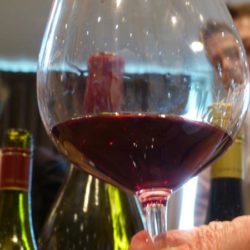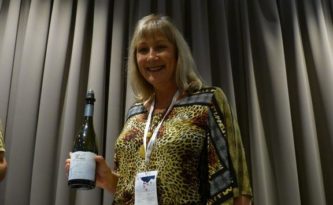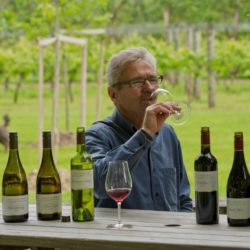Thomas Heaton | January 25 2018
Kiwis are drinking their red wines too warm and our whites too cold, according to expert sommeliers.
Refrigeration leaves white too cold, and chances are red is too warm in the current summer weather.
Wellington wine bar Noblerot served its wines at a range of temperatures according to the varietal; the prime range for red wine was between 18 and 22 degrees.
Noblerot Chef Joshua Dodd with co-owner and sommelier Maciej ZimnyCo-owner and sommelier Maciej Zimny said lighter, fruitier reds, such as pinot noir, lent themselves to being chilled to the bottom of that range.
During warmer summer weather, Zimny recommended chilling red wine from up to 10 minutes before serving, which would reduce the temperature by between three and five degrees.
“When you taste the wine, at a lower temperature it seems complete,” he said.
“Even when it’s slightly colder that it should be it will provide much more pleasure.”
That’s because of the alcoholic smell was exaggerated when it was warm, which was unappetising, according sommelier at Auckland’s French Cafe, Stephanie Guth.
She said. however, the sight of a chilled red wine was odd for customers.
“You want to do it justice but it’s such a weird thing for people to see, red wine in an ice bucket, even though you know it might benefit from it,” Guth said.
Twenty minutes in an ice-bucket before opening and drinking might help to boost the flavour in a pinot noir.
“The more complex the wine you have, the warmer it should be served,” Zimny said, referring to rich red wines such as merlot or Bordeaux varietals.
Conversely white wine should be served chilled, however complex oaky chardonnays should be served slightly warmer than other whites.
So chardonnay’s flavours lent better to slightly warmer temperatures than sauvignon blanc, about 14 degrees as opposed to 10 degrees, because it was important to make sure oak flavours were prominent.
Pinot noir and chardonnay hailed from the Burgundy region of France, and both were classically stored in the same cellar under the same conditions. He said wines have either been served too warm or too cold since the invention of refrigerators.
Cellar temperature was perceived as something quite different to what was initially intended, room temperature, Guth said.
Leaving white wine to warm up slightly released flavours hidden by colder temperatures.
“It doesn’t harm the wine but you tend to get a little more out of the aromas.”
The only reason one should drink a bottle straight out of the fridge was “if you don’t want to taste your wine”, she said.

















